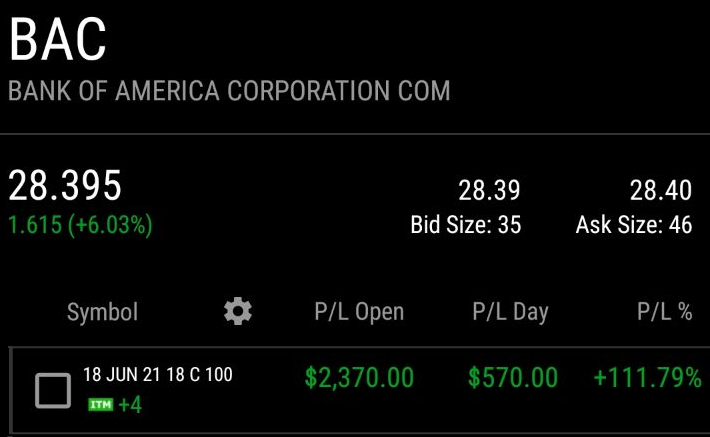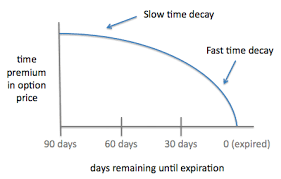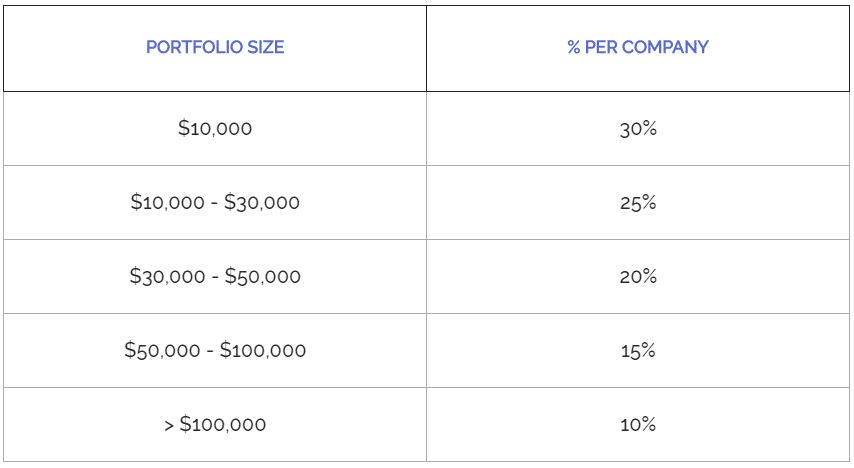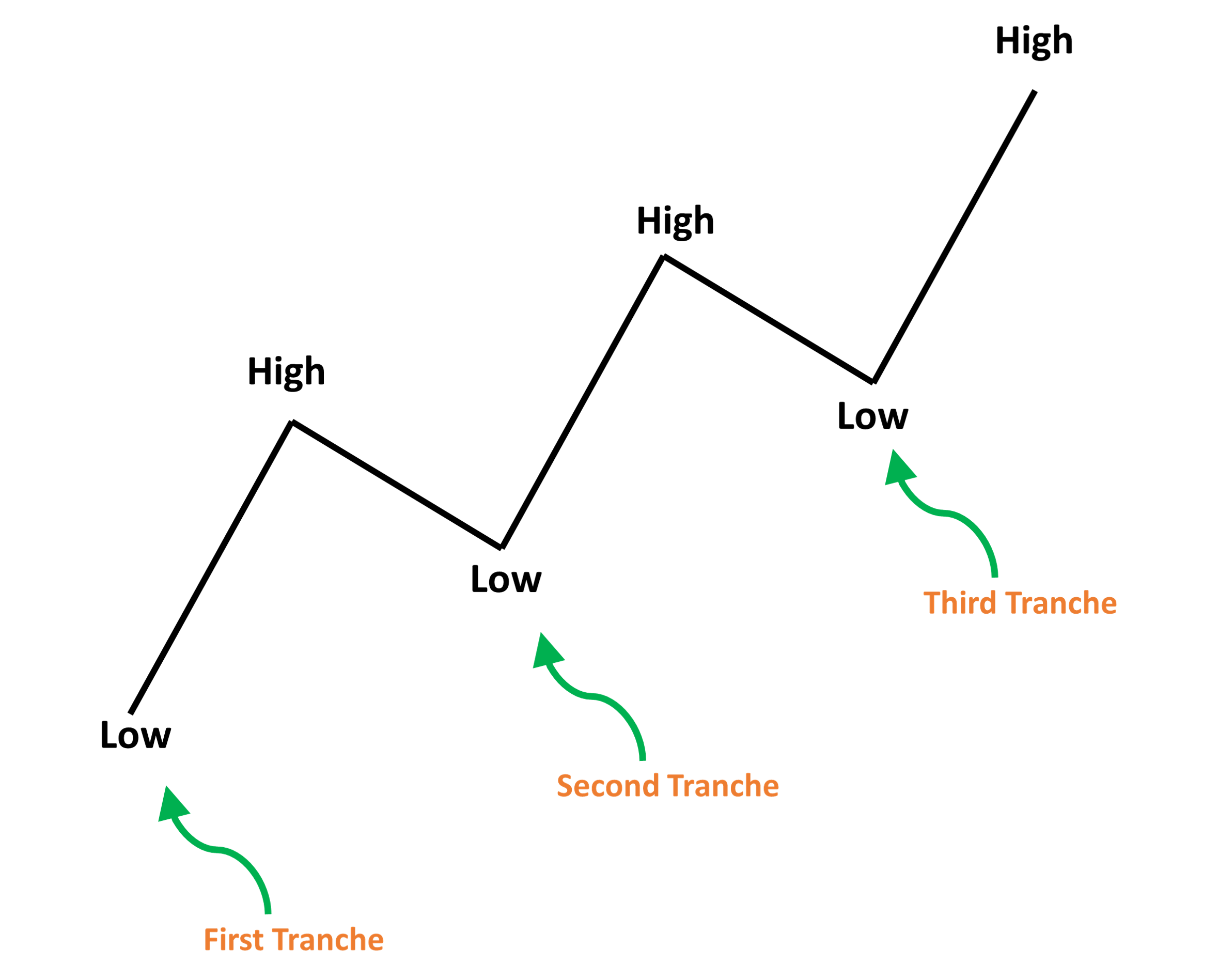In this post I’m going to show you how to invest even with a small portfolio using the power of call options.
(Step-by-step)

Example of a Long Call Option
In fact, this strategy alone has helped me achieved well over 30% returns on my investments, some even up to 100% returns.
And in today’s post I’ll show you exactly how I use this strategy.
Step #1 - Find A Profitable Company

The fundamentals of investing remains the same - to only invest in quality companies.
For those who are new to investing and not sure how to find quality companies, I suggest that you read the "Funnel Method" where I share how I discover quality companies.
It basically outlines why earnings are the most important number to look out for in a company and the other financial ratios you should look out for as well.
The cool thing about using the Long Call Strategy is that it allows me to invest in quality company even when it is overvalued.
"Wait what...investing in overvalued companies?"
Yes, you read that right - this is the only investing strategy where I wouldn't mind investing in an overvalued company.
Why?
Because the risk of call options is much lesser than buying the stock - which helps compensate for the fact that I am investing in an overvalued company.
However, the bottom line is - it has to be a quality company using the Funnel Method.
Only once you find a quality company using the "Funnel Method", we can head over to step 2.
Step #2 - The Trend Is Your Friend

This is where it gets interesting.
You probably already know that using the "Funnel Method", you are able to identify companies that will grow over the long term.
However, for long call options - due to time decay, we want to have an unfair advantage.
That is to invest in a stock that is already on an uptrend.
The definition of an uptrend is as follows:

Definition of an uptrend
The definition of an uptrend is this.
Now, why is investing in an uptrend important?
Well, simply because, the trend is your friend.
A stock that is on an uptrend is more likely to remain in an uptrend.
However, most new investors struggle to identify the uptrend of the stock using the higher highs and higher lows method.
That's why, in order to help my readers - I am going to share an easy way to identify the uptrend of a stock by using the Simple Moving Average (SMA) method.
To put things simply, you just have to look out for this.
You can set this up easily in TradingView, or in most brokerage platforms shown in the video below.
Now you can easily identify the uptrend of the stock.
To give you a little bonus, I also use Stochastic to time my entry - I will only buy my call options when the Stochastic is oversold.
This helps me optimize my entry, to make sure that I am buying on the "low" of the uptrend.

So how do you use the Stochastic? Again, you can set this up on TradingView, or the brokerage account that you are using.
Watch this video, and you will get a better idea of the Long Call Strategy.
At this stage, you should know three things:
Step #3 - Selecting The Right Strike Price

For every option, there are four elements you need to take note of:
- The Underlying Stock
- The "Strike" Price
- The Date To Expiration
- Option Premium
We have discussed the Underlying Stock - by using the "Funnel Method".
Now, let's move on to selecting the strike price.
- The Delta of the Call Option
- The Open Interest of the Call Option
A delta of 0.7 means that if the price of the underlying stock increases by $1, the option price will increase by $0.70.
(Note: Option pricing are affected by many other factors such as volatility, time decay, share price fluctuations, etc)
Typically, we want a higher delta, so that we can benefit from the increase in share price.
Now, before you get confused...let me just quickly explain.
*Time decay refers to to depreciating of the call option as time goes by - basically a bad thing, and we want time decay to be as slow as possible.
We want as high a delta as possible, but the higher the delta, the more expensive an option is.
Therefore, a sweet spot that I choose for the delta is 0.7 to 0.8.
Open interest describes the total number of option contracts that are currently out there.
To put it simply, it offers liquidity when you want to sell your call options away.
There are many new investors who make the mistake of buying call options with very little open interest, and as such, was not able to sell their call options away even though it was making a profit.
The bottom line for selecting the strike price is this:
- Delta between 0.7 to 0.8
- Open Interest more than 300
Step #4 - Selecting The Right Date To Expiry

When you buying a call option, you are fighting against this invisible enemy called "Time Decay".
Time decay basically refers to the depreciation of a call option due to time.
Its kinda like how supermarkets tend to provide discount to their food items which are about to expire.
Therefore, when we buy a call option, we want the time decay to be slow.

The graph above shows the "Time Premium" of an option.
Time decay eats up this "Time Premium", which is essentially part of the call option.
The longer the expiration date, the slower the time decay and vice versa.
As a rule of thumb, I want to select a date of expiration of more than 300 days.
This makes the time decay much slower, and also gives me more time to be correct.
Step #5 - Portfolio Sizing Rules For Call Options

This is probably the most important part.
If you follow the Steps 1 to 3 - you will make money using call options, most of the time.
The keywords are "most of the time".
Will there be times where you will end up losing money?
Yes, most definitely.
But the key idea is to win more than you lose - and the way to do that is by portfolio sizing.
The reason why this is so important is because when you buy a call option, the maximum loss of the call option is 100%.
The way I portfolio size with call options is similar with stocks.

Extracted from "Portfolio Diversification For Investors"
If you read the "Portfolio Diversification For Investors", you will realise that I always enter in tranches - the same thing when I use options as well.
For stocks, I enter using three tranches.
This means that for a $10,000 portfolio, I will limit myself to investing only $3,000 in a company using call options.
I will try to have this $3,000 is split into two to three companies, to provide diversification.
Step #6 The A.P.L Plan For Call Options

In every strategy, you need to consider a "A.P.L" Plan.
What does it stands for?
- A - Adding Positions
- P - Profit Taking
- L - Loss Cutting
You need to know the answers to all three in order to become a successful investing.
Adding More Positions
So when do you add more positions?
I will add more positions if I am right in my investments.
This means as the stock goes up, you want to add more positions.
Most beginner investors will think to themselves,
"But it is more expensive now...why should I buy more?"
However, when using call options, you want to ride the trend if you are right.

You use the same method as Step 2 to enter your subsequent tranches.
Profit Taking
My profit target for my call options is at least 30% - this is a general rule of thumb for me.
If you are more experienced, you can set a profit target of 100%, which is still possible but require a longer waiting time.
There are other investors who are willing to wait till the stock reaches a major resistance.
Loss-Cutting
There are three rules for loss-cutting for call options:
- If the call options fall by 50%
- If the date to expiry is left only 120 days
- The high of the candle is below the 200 SMA
If that is so, we want to exit our position.
When the call option have fell by 50%, it likely suggest that the uptrend has been broke, and our original investment thesis is wrong.
However, with a long date to expiry and a delta of more than 0.7 - it is very rare for your option to be left with 50% premium.
As discussed previously, the time decay of an option becomes faster as the option approaches the date to expiration.
As such, I want to avoid the fast time decay - and will sell my call options when there is only 120 days of expiry left, even if it means a loss.
Conclusion

In short, call options is very useful especially when you are starting with a small portfolio.
However, you need to be stringent on your criteria.
Only use this strategy on quality stocks filtered by the "Funnel Method" and on an uptrend.
If you like to be updated when more of such content comes out on my blog, make sure to subscribe to my newsletter.
Bonus: I will discuss more about using building wealth through the stock market, so if you want to be kept updated when my blog posts are out, the best way is to join my newsletter.
P.S It even includes a wealth building guide for 9-to-5s as a welcome gift.


 Here at Passive Seeds, we hate spam, so we will never share your info. An email will be sent with the link to the wealth building guide, but you can unsubscribe at anytime.
Here at Passive Seeds, we hate spam, so we will never share your info. An email will be sent with the link to the wealth building guide, but you can unsubscribe at anytime.